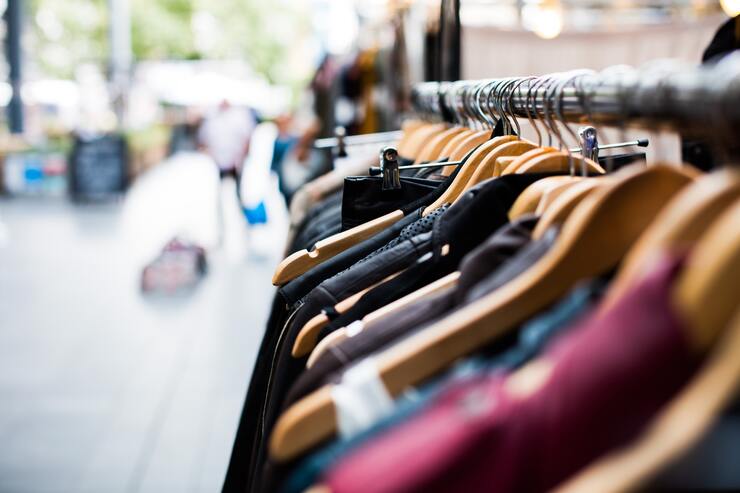

Talking about vintage, or more widely second-hand business, we can board the topic as a simple and long-existing fashion trend, or speak about the so-called “resale revolution”, which is turning the second-hand business model into the mainstream. They both are different faces of the same coin and explain why the vintage market is buzzing so strong at the moment, online as well as offline.
Among the many market players, the main aim is about bringing together a community of vintage aficionados and help them shape and share pleasant shopping experiences.
From clothing to furniture and memorabilia, many specific categories in several marketplaces are for trade, and it can help to think that in 2021, the personal luxury goods second-hand market worldwide was valued at 33 billion euros.
Specificity, quality, and iconicity are key to this business. That’s because, also according to the Cambridge dictionary, vintage means “high quality and lasting value, showing the best and most typical characteristics of a particular type of thing, especially from the past”. This means that to be considered properly vintage, whilst being second-hand is not mandatory, the items must be at least 20 years old.
This fits incredibly well with Millennials and GenZ’s research into past fashion trends. Also, it applies to new behavioural patterns looking for circular economy solutions to the environmental problem. All these aspects are indeed contributing to turning vintage resales into a golden market. And, of course, the digital element is there, too.

In 2018, “nostalgia” was the major fashion search of the year on the internet, according to Google. Top fashion queries were related to the ’80s, ’90s, ’00s and to the grunge style. The COVID-19 pandemic gave a further boost to the trend.
To further strengthen this phenomenon, we find many re-issues that fashion brands like Versace, Helmut Lang, Marc Jacobs, Kenzo and Adidas Originals have run in the past few years, from their most historically representative creations, as well as the logo revivals that firms like Gucci, Amiri or Balenciaga are currently executing.
A strategic nostalgia marketing direction that fashion brands are not making accidentally, as they take into account that Millennials are the most nostalgic generation ever. Even though the last generation to be raised up without digital technology has demonstrated to be the perfect breeding ground for the vintage trend, too.
If Millennials and GenZ are somewhat new to these iconic brands’ outcomes, even older generations find in vintage fashion a reassurance, both stylistically and psychologically. In fact, they return back to find an effect of familiarity and reassurance in a glorious past, that of their childhood.

Every revolution starts with crisis and opportunity. In the case of the resale market, the wasting issue and the awareness that we could be taking better advantage of our resources have become the main triggers for its explosion.
The sensation that we are wasting time, energy, money and, above all, our own planet’s health has pushed a change of mind that has found its best outcome into the sharing and recycling cultures. Services such as Airbnb or Lyft, which were born from this same logic, have already become mainstream in their categories. Now it’s the turn of the second-hand fashion market.
According to a McKinsey study, consumers buy more clothing now than ever: “60 pieces a year, from which 40% is never or rarely worn”. The consequence is that our wardrobes are full of garments we don’t use, while we continue buying. The United Nations Economic Commission for Europe reports that 21 billion tons of textiles are sent to landfills every year.
This amount doesn’t mention the number of garments that, hidden in our wardrobes, enlarge significantly the fashion waste problem.
Finding solutions to slow down fast fashion production has become an emergency for the entire world. The fashion industry alone is responsible for more than 10% of global carbon emissions, and 20% of global water waste. It’s also a major contributor to plastic pollution in our oceans, and it uses a large amount of chemical hazardous substances in its production processes.
In this context, the resale fashion market has emerged as an innovative circular economy option to extend the life of fashion products. Through digital platforms providing great user experiences, vintage culture has given back to life the items we forgot in our closets, becoming a high growth potential market.

According to the fashion resale platform ThredUP, and to the retail analytics firm Global Data, in 2018 the second-hand fashion market had reached a value of $24 billion just in the United States. It was valued as a $34 billion worth market in 2021 and is still forecasted to increase its worth in the next three years reaching $51 billion.
Word is also that by 2028 the second-hand will be $20 billion larger than fast fashion, reaching a value of over $64 billion. Millennial and GenZ generations women are leading this growth, due to an increasing consciousness of the environmental problem. Vintage brings them the possibility of acquiring eco-friendly fashion pieces for an affordable price.
The money-saving aspect is another helping factor for the resale market’s success: the possibility of acquiring unique items and brands that normally people can’t afford. As a consequence, we now face the so-called “second-hand stigma”. With more buyers than ever, resale demand is growing 24 times faster than retailing.

Millennials have been declared as the most powerful consumers in the world. They are redefining luxury. Apparently less interested in status per se, when buying high-end products they search for authenticity and value, above all. Hence, the ability of brands to storytelling is crucial to acquiring these customers, as well as their approach to sustainability, transparency, inclusivity, and responsible production processes.
The new plethora of buyers are not interested in buying in the traditional selling points anymore: people have moved to the Internet, and this has been strengthened, once again, by COVID-19. Now they buy through social media, specifically on Instagram, and not necessarily with the “intent to keep” the goods they buy. Millennials have embraced second-handed luxury products through re-commerce practices, introducing the high-end segment into the circular economy.
In Q4 2018, the fashion search platform Lyst named Gucci as “the hottest brand on the planet”. The Italian firm has become the favourite of the Millennial and GenZ generations, which currently represent nearly 50% of its total sales. The phenomenon is not just due to an evident fascination for its aesthetical proposal, but also to the brand’s ability to focus on its buyer persona’s needs and values.
Gucci is currently dominating the luxury resale market. According to the second-hand luxury player TheRealReal, since 2018 the search volume of the Italian brand on its platform “bumped Chanel and LV from the top spots, growing 48% faster among Millennials than other age groups”. Gucci (+62%) is also the brand whose sales have grown the most in the luxury resale platform, surpassing Hermes (+40%), Chanel (+34%), Celine (+32%) or Tiffany & Co. (+32%).

The resale is a relatively young market. The app ThreadUp, since 2009, or TheRealReal and PoshMark, since 2011, are some of its precursors and main players. Although they focus on different segments, they have all found in Millennial and GenZ generations their best buyers, and huge growth potential. Now, they run the race to overcome fast fashion value in less than ten years. To achieve it, they trust digital technology as the key to creating satisfactory user experiences.
Poshmark, which specialized in mass-market resale, has developed a “peer-to-peer” model which provides a platform for users to interact and facilitates transactions through a payment gateway. On the other hand, ThreadUp (mass market) or The RealReal (luxury market) are representatives of a “full offering” model: they participate in all the selling processes, from the photo capturing to the product listing, shipping or authentication.
Luxury Garage Sale, Ubup, Vinted, Tradesy, Vestiaire or Thrift+ are other examples within the numerous fashion resale platforms that have emerged in the lasts years. While Rebag, exclusively dedicated to bags re-commerce, or StockX, focused on the resale of sneakers and streetwear, are examples of marketplaces specifically dedicated to a unique product category.

Due to the rise of the resale market, traditional retailers have started joining the second-hand movement too. According to ThreadUp, “nine out of ten retail executives entered the resale market since 2018”. We find a good example in Le Good Dressing, the resale marketplace created in 2019 by Galeries Lafayette in partnership with the startup Place2Swap.
Fast fashion companies are also starting to offer resale options as a way of customer engagement, among them H&M. The Swedish company sells secondhand clothing on a platform called Sellpy which was invested on through their division of venture capital.
Once users have made a change in their consuming habits, is predictable that fashion brands and retailers of all kinds will also bet on resale in the next years. The raising market represents an opportunity to reach new customers in search of good purchasing opportunities and to build customer loyalty, through ethical fashion selling.
We’ll be on the lookout for further developments and innovation in the space, as the future looks vibing and bright for the segment, both in terms of positive impact on the industry and on the consumption trends.

Giusy Cannone is Chief Executive Officer of Fashion Technology Accelerator.
She is the reference point for FTA’s corporate projects, also creating business connections for startups in the Acceleration Program and mentoring participants of our Masterclasses,